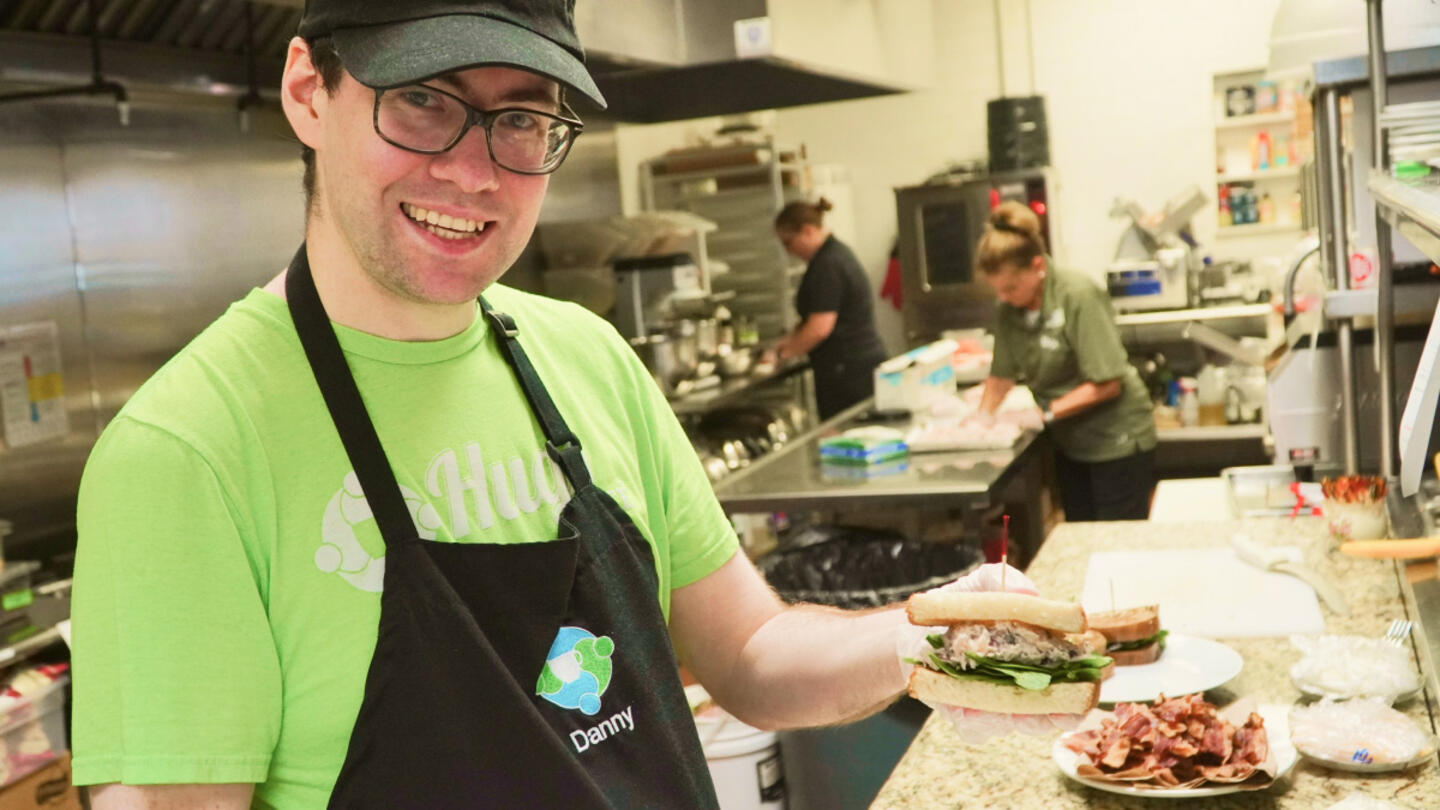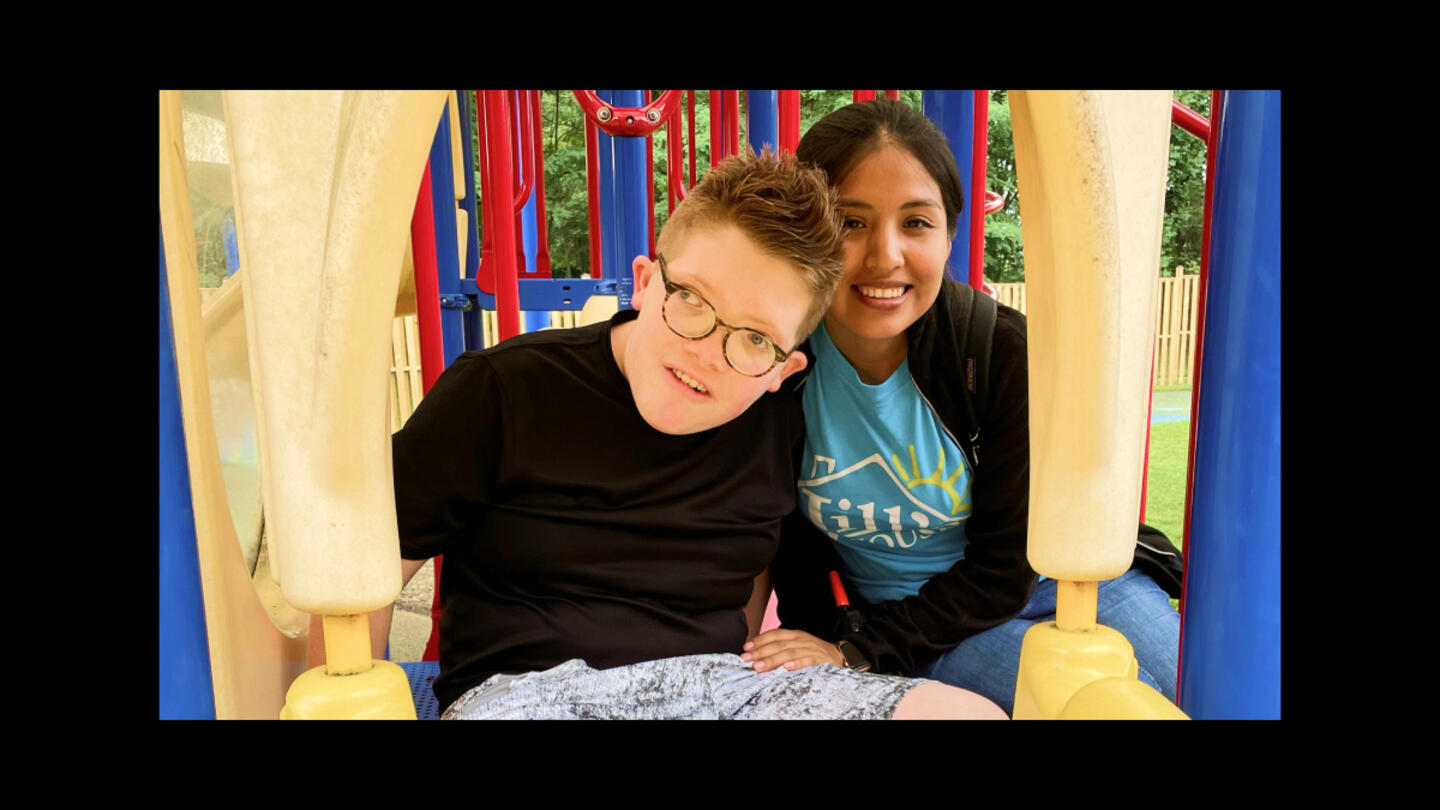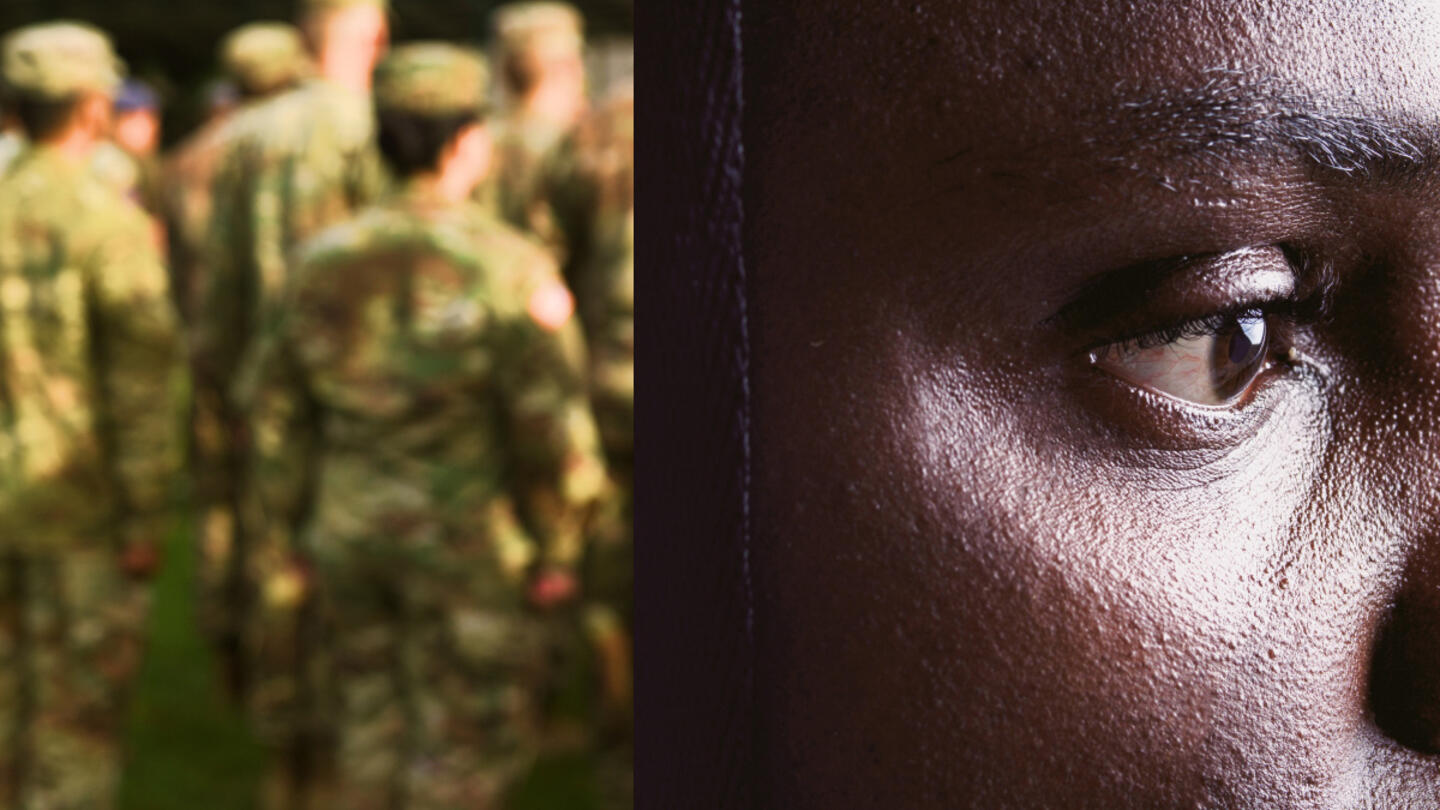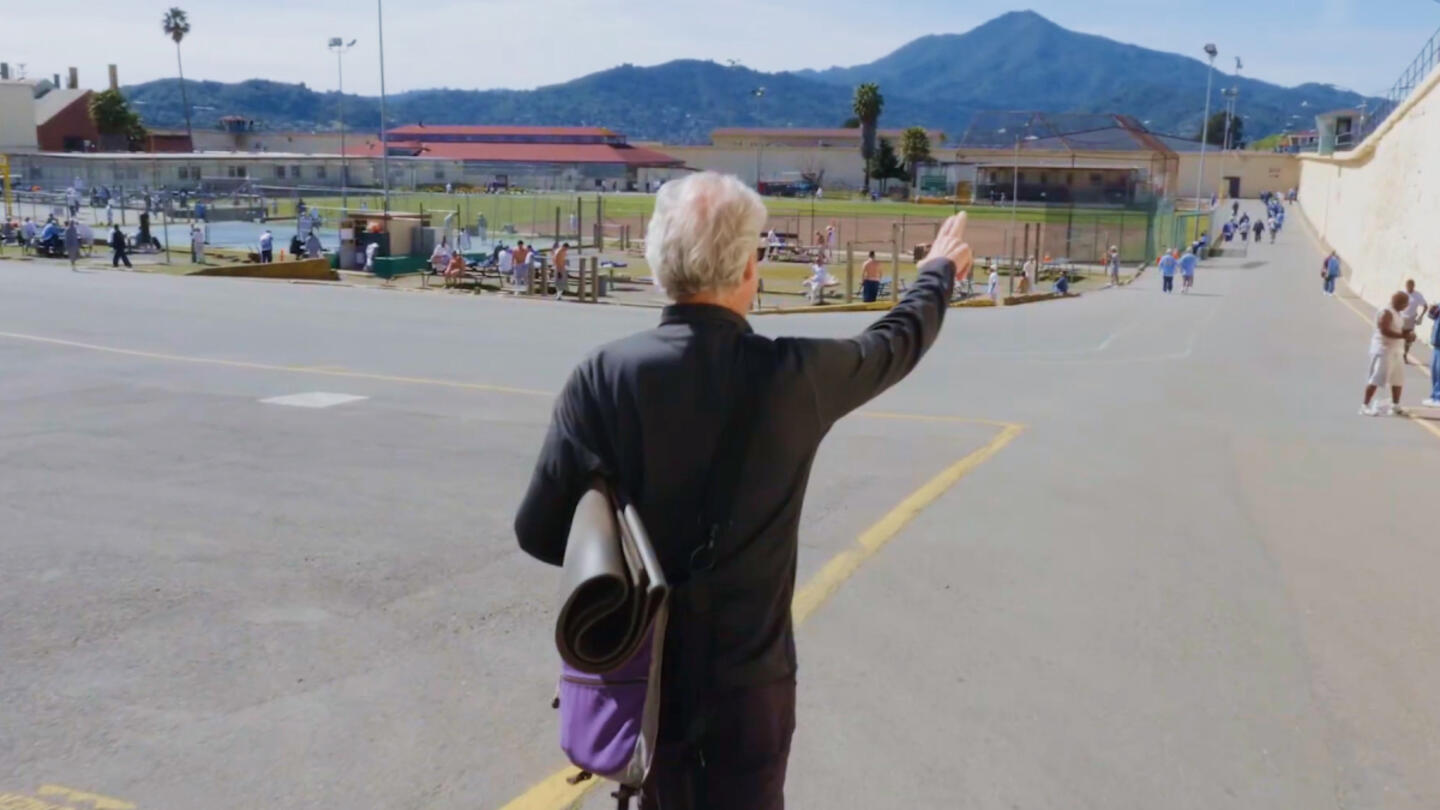Celeste Smith saw teaching yoga in prisons as a way to serve her community. She didn’t expect how deeply it would also affect her.
Smith received a scholarship to train as a yoga instructor with the Prison Yoga Project, a nonprofit helping incarcerated individuals heal from trauma through yoga . Early in Smith’s training, her instructor told her she would likely confront her own trauma along the way. Smith hoped to avoid that part — but when her trauma did surface, she was surprised by how manageable it was.
The training became a way for her to identify and manage her anxiety attacks, teaching her how to reestablish a sense of safety. It’s been life changing.
“I have a new freedom that opens me up to being a better person — a better friend, a better mother, a better grandmother,” she said. Now, she’s using the skills she gained to help people in prison and substance use recovery achieve similar healing through yoga.
This experience nearly didn’t happen for Smith.
Why? The 200-hour training she participated in is one of the most expensive programs Prison Yoga Project offers. It includes extensive one-on-one trainer time and need-based scholarships. Due to budget considerations, it was almost cut.
“We had to consider: Are we having the biggest impact through this training, or is there something different we could be doing to have a greater impact?” said Nicole Hellthaler, executive director of Prison Yoga Project.
Rather than making a decision based solely on cost or their own observations, Hellthaler and her team surveyed participants about the program’s value. What they learned was surprising — and it led them to continue the program.
Gathering and using customer feedback — a standard practice in for-profit businesses — is gaining momentum in the social sector. Without it, many nonprofits focus on what donors want or make broad assumptions about community needs based on a few individuals. Those who want to do more with feedback from the people they serve struggle due to limited time, resources, and high costs.
PYP has piloted this approach, known as “Customer First Measurement,” for two years, collecting feedback from both yoga facilitators and incarcerated participants. Despite the costs of gathering and analyzing the data, the pilot has demonstrated its value, and PYP plans to expand it to more than 100 programs next year.
Before rolling out CFM, Hellthaler had plenty of anecdotal evidence about PYP’s popularity but not the concrete data to support it. She now knows who benefits most, how quickly participants experience improvement, and how many months it takes to achieve the full effects of trauma-informed yoga. Armed with these insights, Hellthaler is not only able to inspire donors and corrections administrators but is also charting new paths to deepen the program’s impact.
This data serves as a powerful tool to inspire meaningful change for incarcerated individuals, shaping strategies rooted in their experiences and feedback to provide greater hope and transformation.
Could gathering participant feedback transform how nonprofits measure success and improve outcomes?
Sign up for the Strong & Safe Communities newsletter for stories, ideas, and advice from changemakers working with their neighbors to address the biggest problems we face.
This program is expensive. Is it worth it?
When Hellthaler’s team surveyed participants of the yoga facilitator training, they found the program justified the additional resources. Participants reported a significant improvement in their quality of life — an average score of 9.44 out of 10 — with 100% saying they would recommend it.
According to the survey, one-on-one time with the training facilitator was the most impactful part of the program. This came as a surprise to the leadership team.
“As leaders, we were assuming the training facilitator was spending too much time with the participants,” said Hellthaler. “But in reviewing their feedback, that was the most impactful part of the program for them. It was a nice humbling moment to be like, ‘OK, keep doing what you’re doing.’”
Hellthaler is now using the CFM data to show donors exactly how their funding impacts people’s lives. “I’m directing my time towards raising funds for this program so we can continue to match the scholarships that are needed.”
As for Smith, she continues to be grateful for the PYP training and that financial barriers didn’t prevent her from gaining these skills. She said the program will continue “to be a blessing to all those that are looking for what [she] was looking for. … knowing that money will not prevent them from meeting their destiny.”
Why anecdotal feedback isn’t enough
Surveying incarcerated individuals is no easy task. You can’t text or email them. You have to consider literacy and language as potential barriers, and distributing the surveys and processing the data are both costly and logistically difficult.
With plenty of anecdotal feedback, why did PYP take on the extra work?
Hellthaler explained it as giving every participant a voice. “This is what they’re telling us, but is this true of everybody in the program?” she said. “Maybe the ones that are less vocal — how are they feeling? What do they need?”
PYP uses the data to understand the specific benefits of its program. For example, how long does the program need to last in order to have the greatest effect? Participants often request that the program continue indefinitely, while some prison administrators suggest it should only last a month.
After two years of surveys, PYP can now confidently answer the duration question. By tracking answers over time with a metric called the “Net Transformation Score,” a self-reported measure of life improvement, PYP has gained key insights into optimal program length.
“Hearing from our participants, we can see that once they hit the three-month mark, their Net Transformation Score is incredibly high,” Hellthaler explained. “So we know that, at minimum, we want to be with people for 12 weeks. Then we start to see the Net Transformation Score level off around one year.”
Hellthaler noted that nonprofits often make assumptions about the communities they serve, but once a program is in place, surveys can test those assumptions.
For example, PYP was surprised when its data debunked a common belief in the wider yoga community that yoga primarily benefits white participants. PYP’s demographic data revealed that people of color reported the highest positive outcomes.
This solid data makes it easier to demonstrate the program’s value to donors, many of whom come from the business community, where customer data is the foundation for decision-making. One donor recently asked Hellthaler how PYP measures success.
She was able to be very specific: “We were able to say a successful program looks like 75% of our participants reporting a nine or 10 on the NTS scale.”
Measurement means you don’t have to have it all figured out
The Prison Yoga Project plans to roll out its surveys to all its U.S. programs next year.
Hellthaler sees the methodology as a way to experiment with what works and what doesn’t. For example, the nonprofit is piloting training for correctional staff, especially mental health professionals, to teach them micropractices — a minute or two of intentional movement synced with breath. PYP’s hypothesis is that incorporating these micropractices throughout the day will improve the well-being of both staff and incarcerated individuals. It plans to test the hypothesis via community surveys.
PYP has also developed a curriculum to supplement its yoga classes for incarcerated individuals. “I think it’s amazing,” Hellthaler said. “But is it really effective if, for example, reading is a big challenge for people? I don’t know, and so we’re going to be asking them that in the surveys.”
Even just the simple act of asking for feedback is empowering for incarcerated individuals. According to Hellthaler, it reinforces that “they’re valued as humans.”
“What’s cool about measurement is that you don’t have to have it all figured out,” she said. “You should be doing the best you possibly can with what you have, but it’s OK to pivot and change. The people that are leading should be the people that you’re serving.”
Prison Yoga Project is supported by Stand Together Foundation, which empowers individuals to reach their full potential through community-driven change.
Learn more aboutStand Together’s efforts to build strong and safe communities and explore ways you can partner with us.

People with disabilities want meaningful work — and Hugs Cafe is making it happen.

At this ‘resort,’ children with intellectual disabilities are seen as gifts to be celebrated and loved.

Veterans experience loss when leaving service. Could this be key to understanding their mental health?

The Grammy-nominated artist is highlighting the stories we don’t get to hear every day.
